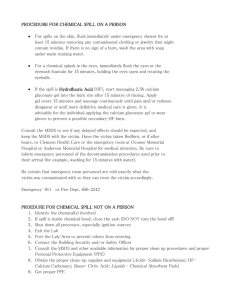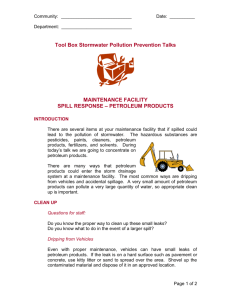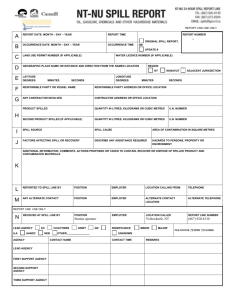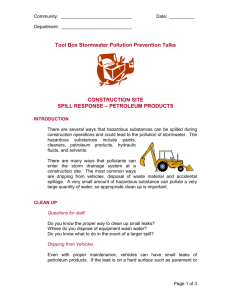Lebanon oil spill threatens bird and marine life
advertisement
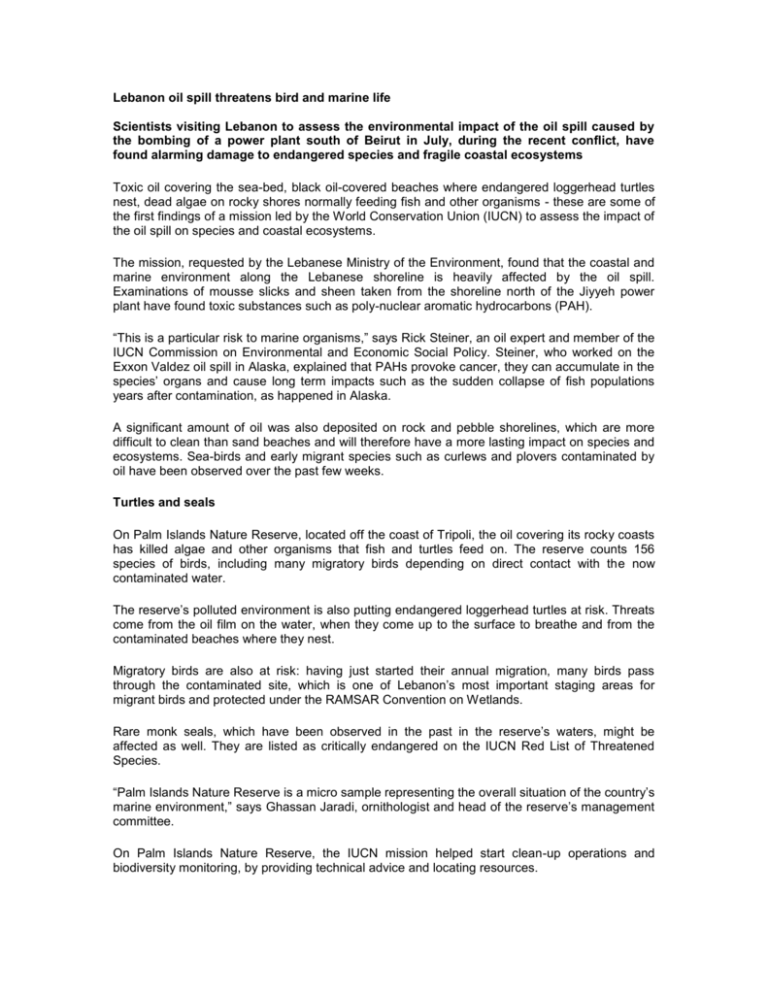
Lebanon oil spill threatens bird and marine life Scientists visiting Lebanon to assess the environmental impact of the oil spill caused by the bombing of a power plant south of Beirut in July, during the recent conflict, have found alarming damage to endangered species and fragile coastal ecosystems Toxic oil covering the sea-bed, black oil-covered beaches where endangered loggerhead turtles nest, dead algae on rocky shores normally feeding fish and other organisms - these are some of the first findings of a mission led by the World Conservation Union (IUCN) to assess the impact of the oil spill on species and coastal ecosystems. The mission, requested by the Lebanese Ministry of the Environment, found that the coastal and marine environment along the Lebanese shoreline is heavily affected by the oil spill. Examinations of mousse slicks and sheen taken from the shoreline north of the Jiyyeh power plant have found toxic substances such as poly-nuclear aromatic hydrocarbons (PAH). “This is a particular risk to marine organisms,” says Rick Steiner, an oil expert and member of the IUCN Commission on Environmental and Economic Social Policy. Steiner, who worked on the Exxon Valdez oil spill in Alaska, explained that PAHs provoke cancer, they can accumulate in the species’ organs and cause long term impacts such as the sudden collapse of fish populations years after contamination, as happened in Alaska. A significant amount of oil was also deposited on rock and pebble shorelines, which are more difficult to clean than sand beaches and will therefore have a more lasting impact on species and ecosystems. Sea-birds and early migrant species such as curlews and plovers contaminated by oil have been observed over the past few weeks. Turtles and seals On Palm Islands Nature Reserve, located off the coast of Tripoli, the oil covering its rocky coasts has killed algae and other organisms that fish and turtles feed on. The reserve counts 156 species of birds, including many migratory birds depending on direct contact with the now contaminated water. The reserve’s polluted environment is also putting endangered loggerhead turtles at risk. Threats come from the oil film on the water, when they come up to the surface to breathe and from the contaminated beaches where they nest. Migratory birds are also at risk: having just started their annual migration, many birds pass through the contaminated site, which is one of Lebanon’s most important staging areas for migrant birds and protected under the RAMSAR Convention on Wetlands. Rare monk seals, which have been observed in the past in the reserve’s waters, might be affected as well. They are listed as critically endangered on the IUCN Red List of Threatened Species. “Palm Islands Nature Reserve is a micro sample representing the overall situation of the country’s marine environment,” says Ghassan Jaradi, ornithologist and head of the reserve’s management committee. On Palm Islands Nature Reserve, the IUCN mission helped start clean-up operations and biodiversity monitoring, by providing technical advice and locating resources. Drifting oil Around 15,000 tons of fuel oil spilled into the sea following the Israeli bombing of the Jiyyeh power plant fuel tanks south of Beirut on 13 and 15 July. The spill spread northwards contaminating 150 km of the Lebanese seashore, reaching the southern Syrian coast. Affected areas are around Beirut, Tabarja, the historic town of Byblos, in Anfeh and the Palm Islands Nature Reserve off Tripoli. The ongoing flight embargo prevented the IUCN team from assessing offshore contamination, but judging from information available, there are still large amounts of oil drifting in the sea, on shore, and sinking to the sea bed. Significant amounts of oil have been sinking to the seabed. “This means that even species living at the bottom of the sea have not escaped contamination, and innovative techniques will have to be developed to address the removal of oil in this context,” says Rick Steiner. So far, the Lebanese government and private initiatives have only been able to remove approximately one per cent of the oil. The results of the mission, compiled in close collaboration with local official and scientific authorities as well as international agencies, will contribute to a Natural Resource Damage Assessment, outlining the full extent of the environmental damage caused by the spill, and support a clean-up operational plan. The spill response plan will support the Lebanese Ministry of Environment in producing guidelines for cleaning the shoreline and dealing with the impacts on ecosystems and species.me 10,000 scientists and experts from 181 countries in a unique worldwide partnership. (IUCN)


